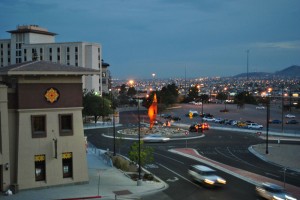Study examines how student writing reflects Mexican drug-war violence
|
EL PASO – As the drug war continues in Ciudad Juárez, one of the world’s deadliest cities just cross the border from the University of Texas at El Paso, the work of international students here has shown the effect drug-related violence has had on their everyday lives. “In the past few years, violence and conflict have become a constant threat to the lives of many students on the U.S.-Mexico border,” said Alfredo Urzua, assistant professor of languages and linguistics at UTEP. “These students that are directly or indirectly exposed to violent events must find a way to balance their educational goals while living in an unstable and unsafe environment.”
Many of the students at the university come from or have close ties to Juarez. The impact the drug violence has had on the university can be seen since the start of the war. UTEP students have protested against the violence and helped families that have been affected.

